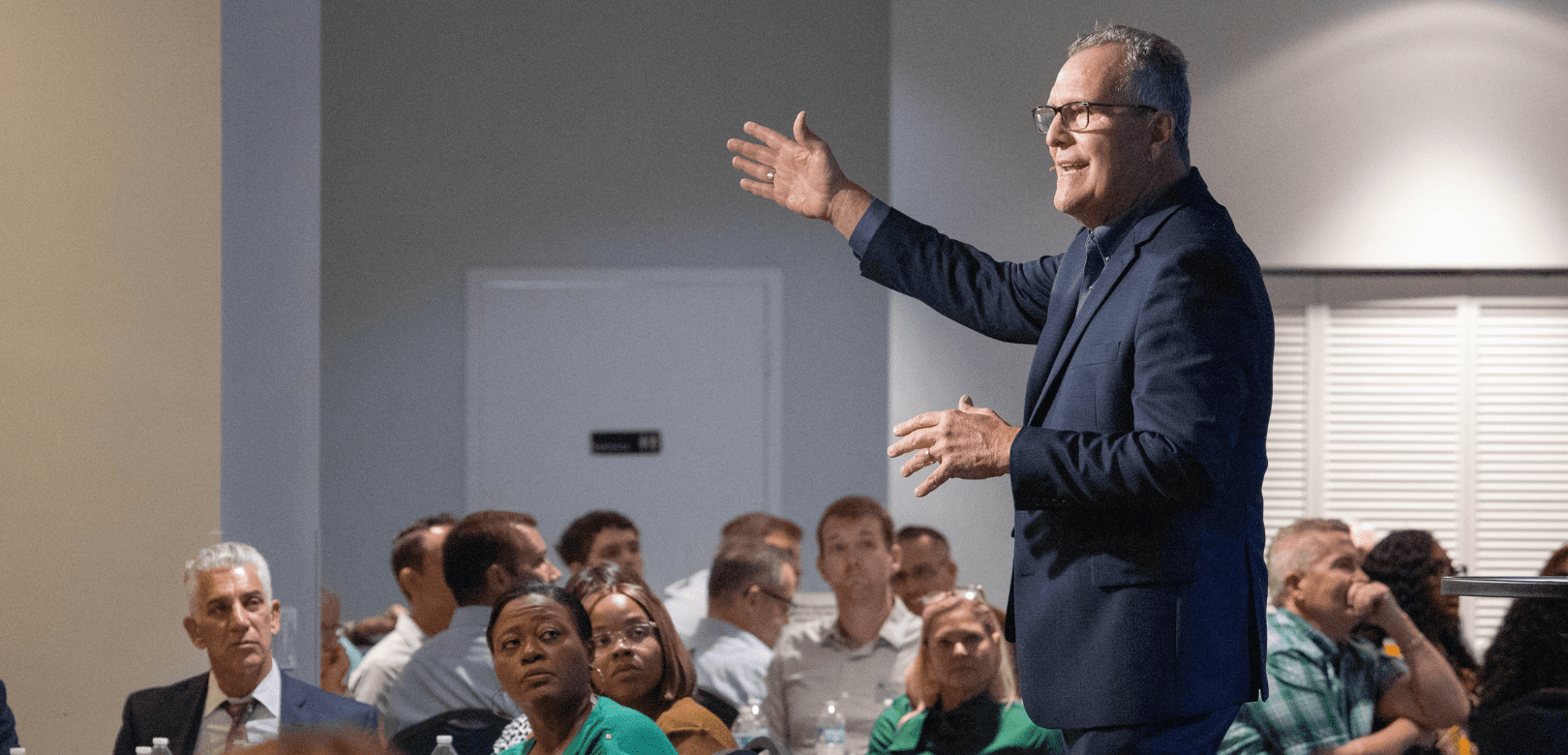As a pastor, I rely on many of the leadership lessons I’ve learned from The Global Leadership Summit, from personal study and from my 14 years as a policeman. But I’ve found the principles I use most often are the ones I learned while training in improv at The Second City in Chicago.
Kelly Leonard and Tom Yorton, authors of Yes, And: How Improvisation Reverses No, But Thinking and Improves Creativity and Collaboration—Lessons from The Second City, describe how improv skills help in business. I want to extend their wisdom into the church.
At Windy City Church in Chicago, we start our staff meetings by reviewing key principles of improv and we have seen a dramatic improvement in how our team functions.
Saying yes doesn’t mean agreeing to whatever anyone says, or that you necessarily like the idea. It means you are willing to explore where the idea takes the group.
1. The first rule of Improv is, “Say Yes.”
At its core, improv is a collaborative process. When people on our teams offer an idea, as leaders, we need to respond with a yes. “Yes” affirms the members of your team and makes them feel their contribution is valued. “Yes” gets the ball rolling and the creative juices flowing and leads you into new areas.
Saying yes doesn’t mean agreeing to whatever anyone says, or that you necessarily like the idea. It means you are willing to explore where the idea takes the group. Even if the project isn’t green-lighted, you may find a path you never would have seen if you hadn’t started with, “Yes.”
That’s how Windy City came to host the Global Leadership Summit. It’s a stretch for all of us, but we said, “Yes,” and now dozens of people will be visiting our church for the first time and people who have never served before will be volunteering.
2. Yes, and…
To be truly effective, every “yes” needs an “and.” In improv, “yes” without the “and” is not a collaboration. It’s a one-person show with another person standing next to them. The scene can only go as far as one person’s imagination, thought, experience or energy can take it.
As leaders, we like people who say, “yes” to us because it means our idea wins and our egos thrive. However, it can kill our organizations. “And” establishes a culture of contribution and creativity.
Someone in the course of “and-ing” will lead you to find the piece of the idea that invokes excitement; the core that moves people. “Yes…but” is easy. Finding flaws and identifying potential problems is a necessary part of the conversation. “And” means people will work harder because they are part of the process. Everyone on the team is expected to play. Everyone should feel the freedom and responsibility to contribute. Even when it is your idea, give your team room for, “And.”
Everyone on the team is expected to play. Everyone should feel the freedom and responsibility to contribute.
3. Save the actor, not the scene.
If an actor makes a mistake on stage, you don’t end the scene. You don’t storm off. You don’t interrupt the scene to recite other rules of improv to them. You don’t look at the crowd and call attention to the mistake and let everyone know that it wasn’t your fault. In that moment, you save the actor because the person is more important than the production. They will still be on your team after the current project ends, and if you don’t have their back, they won’t trust you.
Your people need to know they can trust you, which means taking risks without fearing you will throw them under the bus the first time they make a mistake. Or the second time. Or the third.
4. If you make the people around you look good, you will look good.
The uncomfortable truth is that, as leaders, we don’t always want others to look good. We don’t want to be overshadowed in our own organization. We demand that they make us look good without understanding that when they succeed, we do look good!
Chris Brown gave a compelling talk at the Summit in 2013 about Saul and David. As king, Saul led people to a great military victory, but David’s exploits stole the headlines. Instead of looking for a way to keep David on his team, Saul’s wanted to keep the spotlight on himself. It caused him to lose his best people and eventually his organization. When we worry about making sure we get all the credit or that no one overshadows us, we could lose our best people and ultimately come off looking far worse.
A night at the improv where the players are following these rules is fun for everyone and a pleasure to experience. But when they don’t, it is more like a horror show. The same is true for our teams. Put these rules of improv to work for you and your team will thrive.
Related

How One Church Is Reshaping the Story of Its Town

Why You Should Trade Your Leadership Pipeline Mentality for a Leadership Culture

The Leadership Genius Behind a Hollywood Legend—GLS22 Session Notes

The Tech CEO who sold his home to live with the formerly homeless

Self-Care Should Not Be Selfish: Why Leaders Thrive When They Look Beyond Themselves

Does your team have a microculture?
Leadership That Lasts
Team365 isn’t just a platform. It’s a commitment to grow, lead and live with purpose — every single day. Whether you’re here for content, community or clarity, you’re in the right place. Your leadership matters. Let’s keep going.





